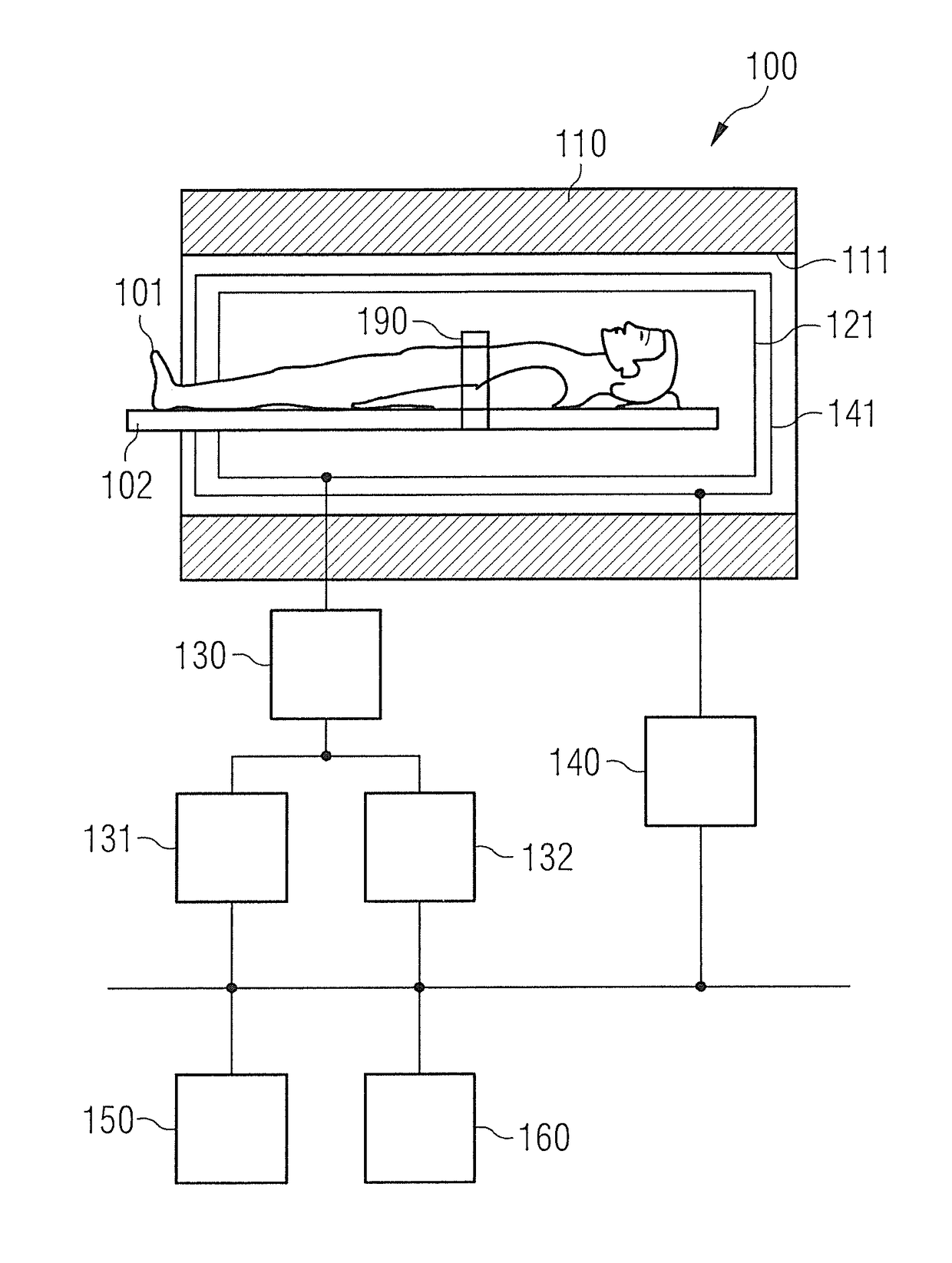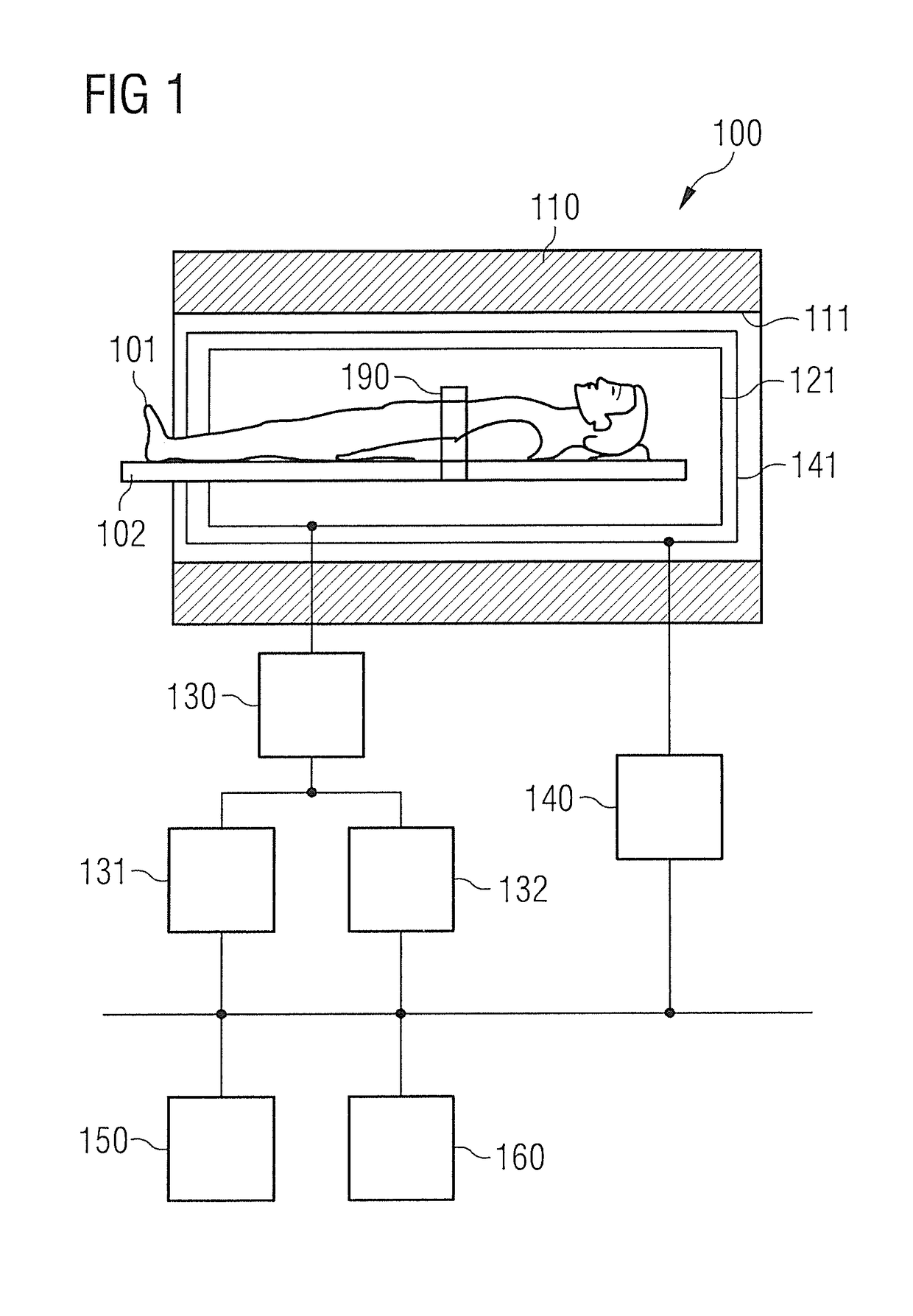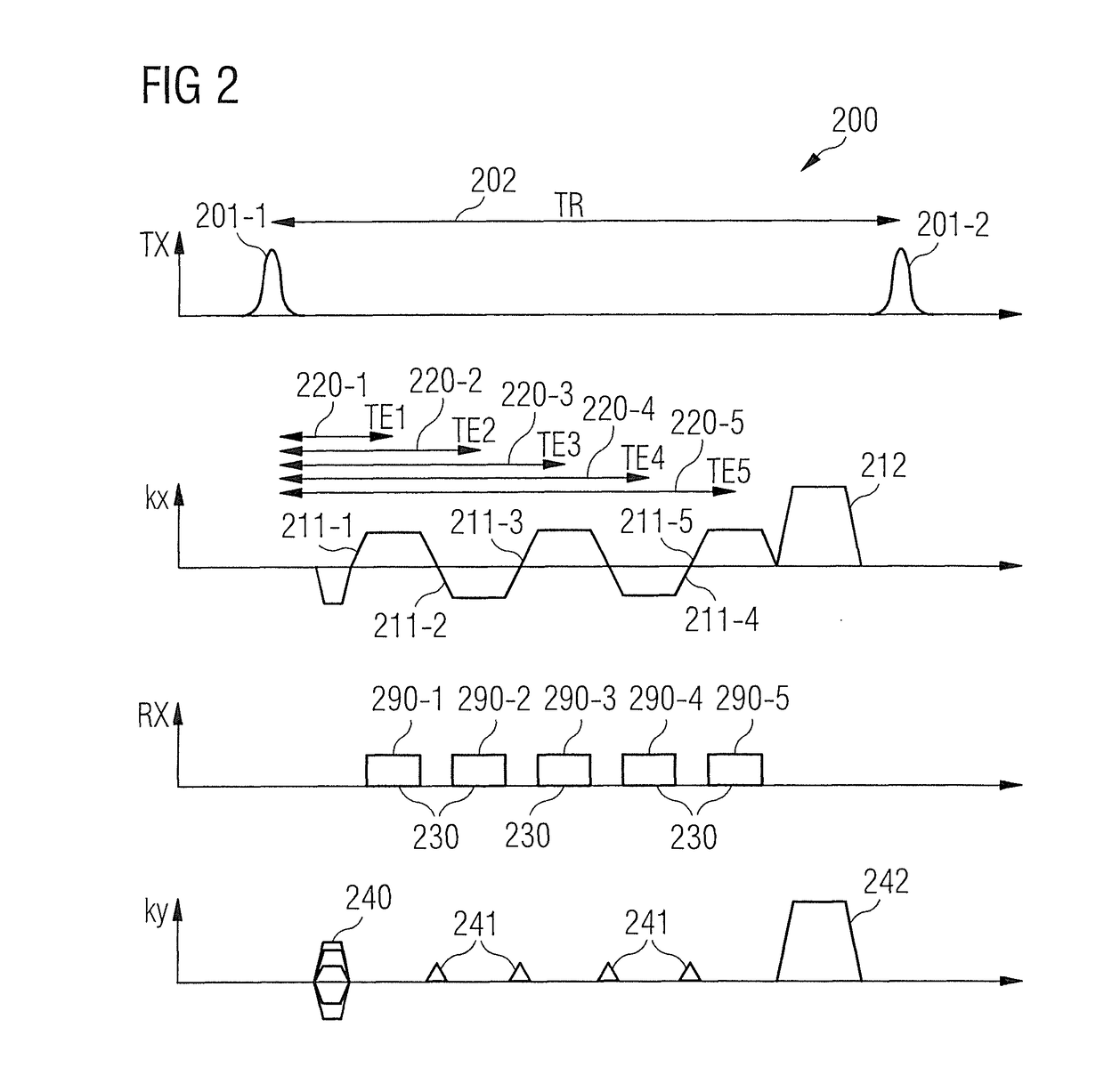Method and apparatus for accelerated magnetic resonance imaging
a magnetic resonance imaging and acceleration factor technology, applied in the field of magnetic resonance imaging, can solve the problems of limited choice of larger acceleration factor of pat technique, various limitations and disadvantages of techniques, and low signal-to-noise ratio
- Summary
- Abstract
- Description
- Claims
- Application Information
AI Technical Summary
Benefits of technology
Problems solved by technology
Method used
Image
Examples
Embodiment Construction
[0059]The invention is explained in more detail below with reference to the drawings. In the figures, like reference signs designate identical or similar elements. The figures are schematic representations of different embodiment variants of the invention. Elements shown in the figures are not necessarily drawn to scale. Rather, the different elements represented in the figures are depicted in such a way that their function and general purpose are rendered intelligible to the person skilled in the art. Connections and couplings represented in the figures between functional units and elements may also be implemented as an indirect connection or coupling. A connection or coupling may be implemented as wired or wireless. Functional units may be implemented in the form of hardware, software or a combination of hardware and software.
[0060]PAT techniques are explained in the following in connection with chemical-shift MR imaging or parametric MR imaging. The shifting of the undersampling ...
PUM
 Login to View More
Login to View More Abstract
Description
Claims
Application Information
 Login to View More
Login to View More - R&D
- Intellectual Property
- Life Sciences
- Materials
- Tech Scout
- Unparalleled Data Quality
- Higher Quality Content
- 60% Fewer Hallucinations
Browse by: Latest US Patents, China's latest patents, Technical Efficacy Thesaurus, Application Domain, Technology Topic, Popular Technical Reports.
© 2025 PatSnap. All rights reserved.Legal|Privacy policy|Modern Slavery Act Transparency Statement|Sitemap|About US| Contact US: help@patsnap.com



